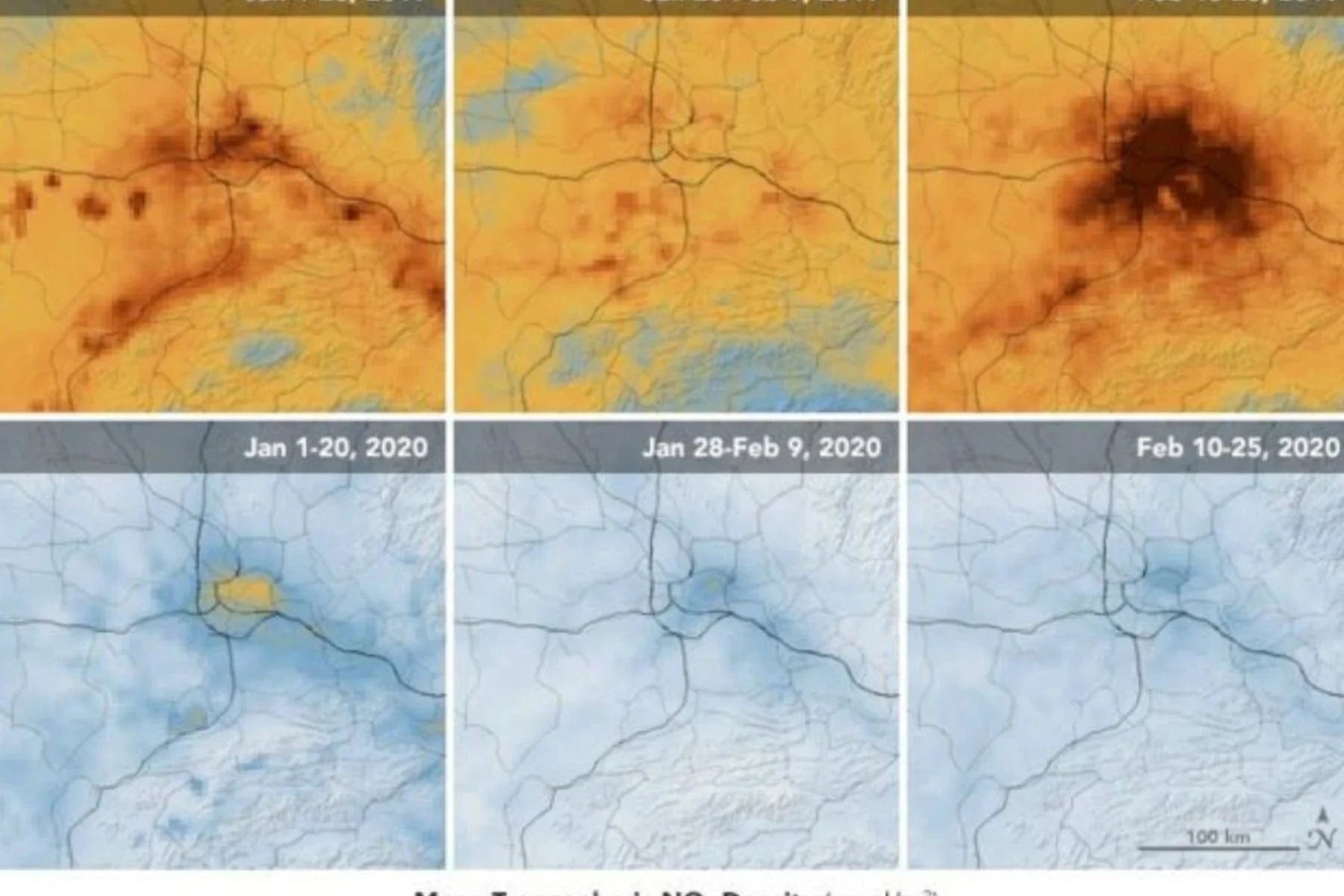The Surprising Climate Change Benefits of Coronavirus

Get news, updates, & event Info delivered right to your inbox:
The Surprising Climate Change Benefits of Coronavirus
Just like that, the entire world has experienced change in its daily routine due to the Coronavirus pandemic, and the need to reduce or stop travel for the sake of global health.
From new strict hand washing regimens to cancelled events or having to work from home, this is without a doubt affecting everything in our daily lives - including our carbon footprint. In fact the environment might just be the only beneficiary of this scary social distancing scenario we are all part of.
Let's Take a Look at How Coronavirus is Affecting the Environment.
Working From Home Means Fewer Carbon Emissions
Now more than ever companies are realizing that their business can stay afloat by allowing their employees to work from home in order to keep everyone safe and healthy. A major plus to working from home is that it is good for the environment! Decreasing carbon emissions alone from the daily commute significantly improves air quality. According to The Climate Group, working from home has the potential to reduce over 300 MILLION tonnes of carbon emissions per year. Not to mention all the other awesome benefits such as work/life balance and decreased traffic congestion.

Air Quality Has Improved in Lockdown Areas
It has been reported that air quality has improved immensely in both Italy and China since residents have been staying home due to the outbreak. According to China's Ministry of Ecology and Environment, "the average number of "good quality air days" increased 21.5% in February, compared to the same period last year." Carbon emissions are also significantly down in China. Between February 3rd and March 1st they experienced a 25% decrease. Because China is the largest polluter in the world, this is good news for all of us as it could potentially measure to an estimated 200 million tonnes.
The significant changes have been visibly documented by NASA in the images below


Italy has also seen a significant drop in air pollution caused by human activities. The time lapse video above comes from the European Space Agency and it documents the nitrogen dioxide reduction from the start of 2020 to this week. Nitrogen dioxide is produced by cars and power plants.
The Venice Canal also appears to be running clearer and cleaner than ever before. Residents of the city have been marveling over its appearance.
Even China's coal consumption has dropped by a whopping 36% from February 3rd to March 1st compared to the same period last year.

But it's not all good news...
Coronavirus Has Also Reduced the Ability for Vital Climate Discussions
The United Nations has had to postpone any climate change talks until at least the end of April, as part of the effort to contain the coronavirus, according to Climate Change News. 12 meetings planned between now and the end of April could be affected.
An EU-China climate summit due to take place at the end of this month has also been postponed, and the critical UN 2020 Biodiversity Conference, scheduled for October now has an uncertain fate. Such events are essential for governments to draft agreements and implement concrete climate action.

And when it comes to social gatherings...
Greta Leads the New Digital Age of Striking
Our fearless #FridaysforFuture leader, Greta Thunberg announced last week that she would not be hitting the streets to protest, instead she would be leading the #DigitalStrike. What does that mean exactly? It might be better to use her words exactly.
"We can’t solve a crisis without treating it as a crisis and we must unite behind experts and science. This of course goes for all crises. Now the experts urge us to avoid big public gatherings for a better chance to #flattenthecurve and slow the spreading of the CoronaVirus. So I personally recommend that we do as the experts say. Especially in high-risk areas. We young people are the least affected by this virus but it’s essential that we act in solidarity with the most vulnerable and that we act in the best interest of our common society. The climate and ecological crisis is the biggest crisis humanity has ever faced but for now (of course depending on where you live) we’ll have to find new ways to create public awareness & advocate for change that don’t involve too big crowds - listen to local authorities. So keep your numbers low but your spirits high and let’s take one week at the time."
We fully support Greta and the young activists shaping the way we now need to do things. Join Greta this Friday and support climate action from home by posting your own sign!
So, if we HAVE to seek a silver lining in all of this, at least we can say that the down time we are taking is benefiting the environment, for now. Just be sure that you are still making wise purchasing decisions when you are stocking up on supplies! And while social distancing can at times feel boring or a bit daunting, take this time to think about how you can better serve the planet. If you need a little inspiration, we have compiled some ways you can keep calm during the Coronavirus outbreak. And as always, planting trees will make the world a better place!

Looking for more info about Coronavirus's impact on the environment? Check out Vennegage's recent post to learn more.
Get news, updates, & event Info delivered right to your inbox:
Related Posts
9 Sustainable New Years Resolutions
18/12/2025 by Meaghan Weeden
Inspirational Quotes About Trees
16/12/2025 by Meaghan Weeden
The 9 Oldest, Tallest, and Biggest Trees in the World
11/12/2025 by One Tree Planted
Popular On One Tree Planted
Inspirational Quotes About Trees
16/12/2025 by Meaghan Weeden
The 9 Oldest, Tallest, and Biggest Trees in the World
11/12/2025 by One Tree Planted
What Causes Deforestation?
10/07/2025 by Meaghan Weeden
Fundraising Disclosures

Be Part of the
Restoration Movement
The Grove is more than just a monthly giving program: it's a vibrant community of individuals who are dedicated to reforestation and environmental restoration on a global scale.
As a member of The Grove, you affirm your commitment to restoring forests, nurturing biodiversity, and fostering positive global change.



